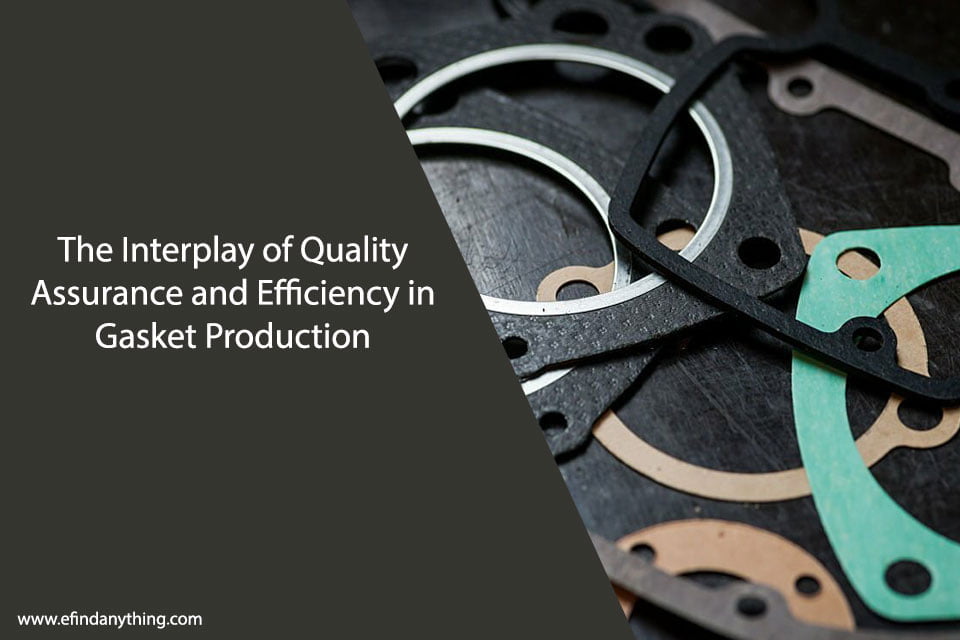
Gaskets are crucial in ensuring leak-free and reliable sealing solutions in various industries. Producing high-quality gaskets requires a careful balance between quality assurance and efficiency. This blog post will explore the interplay between these two factors in gasket production, highlighting the importance of maintaining rigorous quality standards while maximizing production efficiency.
Table of Contents
Quality Assurance: The Foundation of Reliable Gaskets
Quality assurance is the cornerstone of gasket production. Strict adherence to quality standards ensures gaskets meet the required specifications and perform reliably under varying conditions.
Comprehensive testing procedures, such as pressure and temperature resistance tests, dimensional checks, and material verification, are essential to guarantee the quality and performance of gaskets. Robust quality assurance practices instill confidence in customers and ensure gaskets function as intended.
Waterjet Cutting: Enhancing Efficiency in Gasket Production
In the world of gasket production, efficiency enhancements often come from innovative technologies. One such technology is waterjet cutting, a non-thermal method highly effective for gasket materials. This technique uses a high-pressure stream of water, sometimes mixed with an abrasive substance, to cut the gasket material. The major advantage of waterjet cutting lies in its precision and flexibility.
It can seamlessly cut intricate shapes and patterns without causing any deformation or damage to the material, thus reducing waste and enhancing efficiency. Moreover, it’s suitable for various materials, including rubber, metal, and composite gaskets. By integrating waterjet cutting systems into their production processes, gasket manufacturers can uphold their quality assurance standards while significantly improving production efficiency.
Efficient Manufacturing Processes: Streamlining Production
Efficiency in gasket production is vital to meet demand, reduce costs, and stay competitive. Implementing efficient manufacturing processes optimizes resource utilization, reduces waste, and shortens production cycles. Techniques like automated cutting, die-casting, and injection molding enable precise and rapid production, enhancing overall efficiency. By streamlining processes, manufacturers can meet customer requirements promptly while maintaining cost-effectiveness.
Materials Selection: Balancing Performance and Cost
The choice of materials in gasket production directly impacts the performance and cost-effectiveness of the final product. Selecting the right materials involves considering factors such as temperature range, chemical compatibility, and durability requirements.
High-quality materials, such as elastomers, graphite, and metal alloys, offer excellent sealing properties. However, balancing material performance with cost considerations is crucial for achieving an optimal balance between quality and efficiency.
Continuous Improvement: Enhancing Quality and Efficiency
To excel in gasket production, manufacturers must embrace a culture of continuous improvement. Regular evaluation of manufacturing processes, customer feedback, and technological advancements enable companies to refine their production methods and enhance both quality and efficiency. Implementing lean manufacturing principles and investing in employee training and development programs contribute to ongoing improvement and operational excellence.
Supplier Relationships: Ensuring Consistent Quality
Maintaining strong supplier relationships is crucial for ensuring consistent quality in gasket production. Collaborating closely with material suppliers allows manufacturers to source high-quality materials that meet stringent specifications.
Regular communication and quality audits help verify the reliability and consistency of supplied materials, reducing the risk of production issues and ensuring consistent gasket performance.
Customer Feedback and Satisfaction: Driving Quality Assurance
Customer feedback is pivotal in driving quality assurance efforts in gasket production. By actively seeking customer input and implementing feedback mechanisms, manufacturers can identify improvement areas and promptly address any concerns.
Understanding customer needs and expectations allows manufacturers to tailor their production processes to deliver gaskets that meet or exceed customer requirements, ensuring satisfaction and long-term partnerships.
The interplay between quality assurance and efficiency is critical in gasket production. Rigorous quality standards and testing procedures are essential to ensure reliable sealing solutions. At the same time, optimizing production processes, selecting suitable materials, embracing continuous improvement, and maintaining strong supplier relationships drive efficiency.
By striking a balance between quality and efficiency, manufacturers can provide high-performance gaskets that meet customer expectations while staying competitive in the market. The harmonious interplay between quality assurance and efficiency is the key to success in gasket production.





